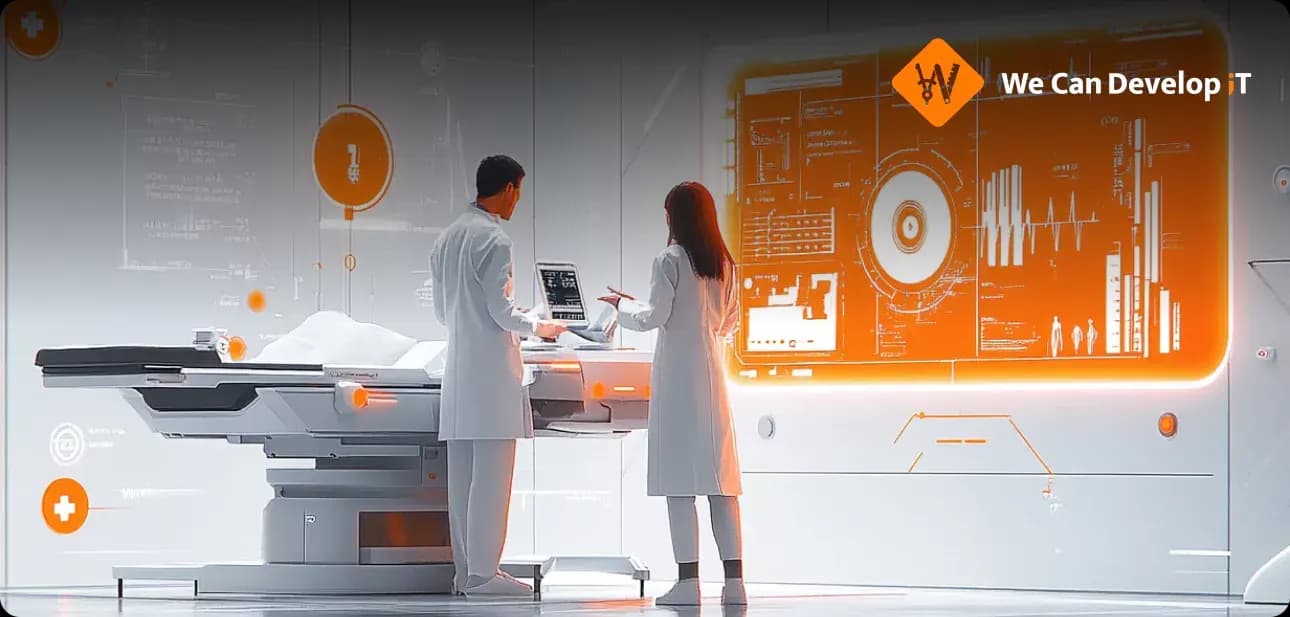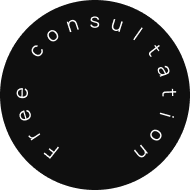Back
Updated at: October 11, 2025
Personalized Healthcare Services: How Technology Is Humanizing Medicine

How John prevented gastritis without much effort and without interrupting his business
John became fascinated with his new fitness bracelet and started delving into the statistics collected by it. It turned out that with his sedentary lifestyle and food preferences, there was a high probability of developing gastritis. This explained the periodic heaviness in his stomach that he felt after daily meals. Due to his fluctuating work schedule, John couldn't make an appointment with a doctor. So, he did it remotely. The doctor took into account the fitness bracelet's readings. On the clinic's website, he requested John's medical record. He then entered a proposed treatment plan and necessary medications. The AI agent checked the compatibility of the proposed drugs with John's known reactions to the components and determined that John needed to be prescribed an alternative that did not contain irritants. Within a month, John got rid of the pain, switched to a healthy diet, and started exercising more frequently, as the fitness assistant of the bracelet advised.
Healthcare is truly in flux
Once, medicine transitioned from individuality to universality to optimize and reduce costs. The downside was a deterioration in treatment outcomes. After all, it turns out that we are all individuals and each needs a special approach. But is a personalized approach possible without significant expenditure of such a precious resource as time? Of course! We are already moving from a universal approach to individual attention. And this is not futurism — it is already a reality. Personalized applications and wearable devices keep track of us, telemedicine allows for a consultation with a doctor from another time zone and even with a different language, trained and constantly learning AI for selecting treatment based on millions of collected cases — all this is becoming accessible. Moreover, such solutions are increasingly becoming unified public services in the name of the overall health of the nation and minimizing or ultimately defeating many diseases that ultimately become anachronisms and relics of the past.
What are the most in-demand areas for healthcare software development?
1. Health Tracking Applications: Your Personal Physician
Fitness trackers and smartwatches are becoming commonplace. But there is much more behind them than just counting steps. They are constantly evolving and improving. In order to create a personal health picture that aids in the detection of early warning signs, modern health monitoring applications check your heart rate, oxygen levels, sleep quality, and even your mood. Additionally, many details, such as calories consumed and food preferences, can be added to the overall statistics separately. All this is compiled into a single picture that can be easily analyzed to respond promptly to alarming signals.
Example: An app reminds a person to be active every day while simultaneously tracking their heart rate, stress level, and other parameters. And once, with regularity in collecting information, the app can identify a persistent anomaly and suggest seeing a doctor before the first symptoms appear.
Why it matters
Such solutions help to take preventive care of health on a daily basis. What could be more important than preventing a disease? Therefore, the wearable device industry is not facing a decline in demand. At the same time, all devices are gradually going through stages of unification and gradation, providing improved APIs for developers and increasingly stable and accurate devices. It is no longer a challenge to develop your own software with a user-friendly interface, flexible sensor system settings, and personal data protection. It is also about implementing your own innovative approaches in what seems to be an already familiar and standardized field of fitness tracking.
2. Telemedicine: one click from the doctor
A personal visit to the doctor, going to the clinic often sounds like a luxury, and for some, it is perceived as a barrier or obstacle to taking care of their health. Not everyone has the opportunity to quickly get an appointment. Traffic jams, work, children, distance... Telemedicine solves this problem. Video consultations, electronic prescriptions, remote monitoring—all of this makes medical care closer and more accessible.
Example: An elderly patient with chronic diseases does not need to travel across the entire city to discuss test results. They open the application, clicks one button - and already communicates with his attending physician face to face.
What you should know:
Modern telemedicine platforms can be integrated with existing clinic systems or created "from scratch" taking into account the specifics of your medical center. The most popular option is a combined approach. It is critically important that the developed custom telemedicine app is a reliable and secure solution, complying with all data storage requirements. Of course, no less important is an intuitive interface for the medical staff themselves, so that any procedure can be completed in a couple of clicks, and data entry can be done through automatic voice recognition, document scanning, or video recording support. Options for patient authorization on the platform include: through a unified state portal, using an electronic digital signature, using a medical insurance number, or a simpler option - through scanning a passport/driving license.
3. Personalised treatment: when technology thinks about you
Modern scientists are delving deeper into the nature of diseases, penetrating further into the matter of viruses, bacteria, their structure, and genomes. One of the significant recent discoveries is that many diseases previously deemed incurable with 100% certainty can be overcome only with the help of personalized medications. For example, a disease like cancer. This principle also works for seemingly simple medications and treatment approaches—personalized approaches show significantly greater effectiveness in selecting the appropriate combination of therapies and medications. Answers to such questions are increasingly being found by AI in healthcare. It analyzes dozens of factors from genetics to lifestyle and offers personalized treatment options.
Example: A doctor for a person with type 2 diabetes gets personalised prescriptions based not only on standard protocols, but also on their activity level, dietary patterns and previous responses to treatment. All of this runs on algorithms trained on millions of anonymised cases around the world.
What matters is the data:
Creating such a system is not necessarily a global scientific project. The project software being developed should be capable of working with big data, building machine learning models, and integrating them into user-friendly medical interfaces. The collected statistics on treatment outcomes will positively influence the algorithms of "medical AI." Feedback from the treating physician should also be provided. This will help the arbitration by the medical commission to draw certain conclusions and influence the further improvement of the system.
Why Should Healthcare Providers Care Now?
-
Patients expect personalization. Tools that actually adapt to them build real trust. Timely creation of a digital medical profile for the patient is a strong foundation for their confidence and security in the future.
-
Digital healthcare is no longer the future — it’s the standard. Early adopters stand stronger in the market.
-
Digital health solutions are not as complicated as they seem. With a technology partner who knows how to communicate simply and deliver reliably (hello from the WeCanDevelopIt team), such projects are implemented quickly and with clear results.
Final Thoughts: Personalization Isn’t Hard — It’s the Right Thing to Do
We live in an era where technology allows us to treat people, not just illnesses. Personalized digital healthcare solutions make medicine more accessible, more accurate, and — most importantly — more human.
If you’re a medical center, clinic, insurance company, or healthtech startup, now is the perfect time to explore your digital potential. And the WeCanDevelopIt healthtech development company is always willing to assist – with knowledge, clarity, expertise and empathy for users.
Summary:
The article discusses the evolving landscape of personalized healthcare services, emphasizing how technology is enhancing the human aspect of medicine. It highlights the story of an individual who successfully managed his gastritis through remote consultations and the analysis of data from a fitness bracelet. This case exemplifies the shift from a universal approach to a more individualized healthcare model, supported by telemedicine and AI advancements. Health tracking applications are increasingly sophisticated, allowing users to monitor various health metrics and receive early warnings about potential issues. Telemedicine is making healthcare more accessible by enabling remote consultations and electronic prescriptions, particularly beneficial for those with mobility challenges. Additionally, the article underscores the importance of personalized treatment, showcasing how AI can tailor medication plans based on individual genetic and lifestyle factors. The integration of big data and machine learning into healthcare applications is crucial for developing effective personalized therapies. As patients demand more customized care, healthcare providers are encouraged to adapt to these expectations to build trust and improve patient outcomes. The article concludes by asserting that the integration of technology in healthcare is essential for making medicine more accessible and humane, urging healthcare entities to explore their digital capabilities. Overall, the discussion reflects a significant transformation in healthcare delivery, driven by technological advancements and a focus on personalization.
Read also:
PersonalizedHealthcare
DigitalHealth
HealthTech
WearableDevices
Telemedicine
AIinHealthcare
RemoteMonitoring
PreventiveCare
SmartHealthcare
MedicalInnovation
FitnessTracking
HealthcareApps
DigitalMedicine
HealthData
HealthcareTechnology
FutureOfMedicine
MedicalAI
VirtualDoctor
HealthcareTransformation
PatientCentricCare




